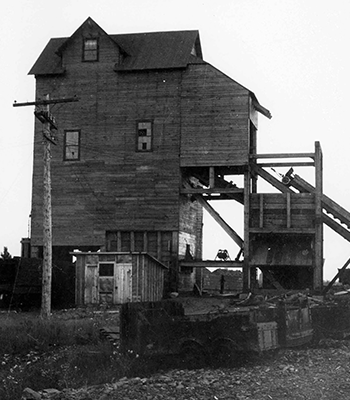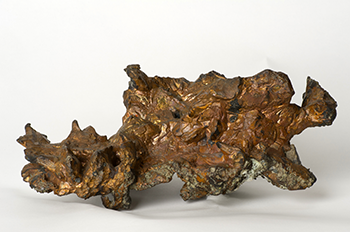

|
Interested in learning about and supporting an effort to showcase the state’s copper mining history?
Mark your calendar to attend one of two informational sessions Tuesday, July 9, to hear about the potential for establishing a “Copper Country” National Heritage Area in the western Upper Peninsula.
The Michigan Department of Natural Resources' Office of Public Lands and Michigan History Center are joining to begin working with local groups to determine the feasibility of a National Heritage Area designation that would cover Keweenaw, Houghton and a small portion of Ontonagon counties, including Isle Royale.
Gathering community input is the first step toward obtaining this designation. The public and media representatives are invited to join DNR staff at either of the July 9 public sessions:
The same content will be presented at both meetings. Each will include a presentation on the National Heritage Area process, potential boundary area and feasibility study guidelines, plus an opportunity for participants to share their reactions to the presentation and discuss what is important to them about the area’s heritage and culture.
|
For thousands of years, Indigenous people utilized copper from the Upper Peninsula for utilitarian, ceremonial, decorative and trade purposes. It has been found as far away as Florida. The modern era began when State Geologist Douglass Houghton published his 1841 report that noted the presence of copper in the Upper Peninsula. Before California’s gold rush, the U.P. experienced the nation’s first big mining boom. People came from all over to attempt to mine the red metal. From 1847 to 1887, Michigan led the nation in copper production. The Calumet and Hecla Mining Company produced half of the nation’s copper in the 1870s. “There is no question that the story of Keweenaw copper is one of national significance,” said Sandra Clark, director of the Michigan History Center. “The historic and cultural impact of copper remains visible on the landscape in the traditions of residents and the memories of many visitors.” |
The National Heritage Area Program is operated by the National Park Service. A National Heritage Area is a place designated by Congress “where natural, cultural, and historic resources combine to form a cohesive, nationally important landscape. Through their resources, NHAs tell nationally important stories that celebrate our nation’s diverse heritage. NHAs are lived-in landscapes. Consequently, NHA entities collaborate with communities to determine how to make heritage relevant to local interests and needs.
NHAs are a grassroots, community-driven approach to heritage conservation and economic development. Through public-private partnerships, NHA entities support historic preservation, natural resource conservation, recreation, heritage tourism, and educational projects. Leveraging funds and long-term support for projects, NHA partnerships foster pride of place and an enduring stewardship ethic.” (National Park Service)
|
Unlike national parks and other publicly owned lands, National Heritage Areas are typically regional in size and thus may include privately owned lands. National Heritage Area designation does not affect land ownership and does not restrict private property rights. Before an area can receive a designation, the National Park Service requires a feasibility study. The study determines whether the area tells a story of national significance. National Heritage Areas are designated through a new federal law. As of 2023, 62 have been designated. |
Michigan is currently home to one National Heritage Area, the MotorCities National Heritage Area. Designated in 1998, this NHA celebrates Michigan’s impact on the automobile industry. It is headquartered in Detroit and includes sites across 16 counties in southeast and central Michigan. Featured sites include the Ford Piquette Avenue Plant, the Old Mill Museum, the R.E. Olds Transportation Museum and the Ypsilanti Automotive Heritage Museum.
Contact: Sandra Clark (MHC), 517-243-4041 or Tori Irving (DNR), 906-202-5764